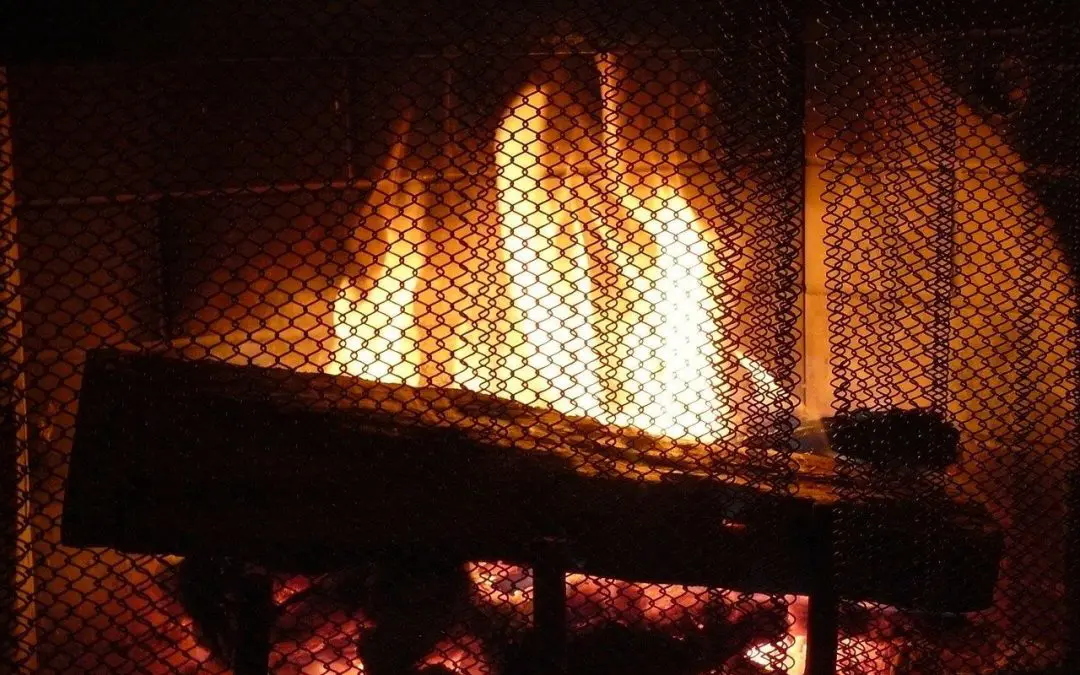There’s nothing quite like the cozy glow of a fireplace on a chilly evening. Whether you have a traditional wood-burning fireplace, a gas unit, or an electric model, fireplaces create warmth, ambiance, and a natural gathering place in your home. However, they also require regular maintenance and responsible use to ensure safety. A neglected or improperly used fireplace can pose serious risks, including fires and carbon monoxide poisoning. But don’t worry—staying safe is simple when you follow a few key fireplace safety guidelines. Let’s go over everything you need to know to keep your home warm and secure.
Keep Your Fireplace Clean and Maintained for Fireplace Safety
Regular maintenance is the first step in fireplace safety. If you have a wood-burning fireplace, creosote—a flammable substance that builds up inside the chimney—needs to be cleaned out periodically. A professional chimney sweep should inspect and clean your chimney at least once a year. This helps prevent dangerous chimney fires, which can start when creosote ignites.
For gas fireplaces, check the vents for blockages, make sure the pilot light functions properly, and inspect for any gas leaks. Electric fireplaces require less maintenance but should still be checked for loose wiring and dust buildup. No matter what type of fireplace you have, keeping it in good condition ensures it runs safely and efficiently.
Use the Right Fuel and Materials
If you’re burning wood, choose dry, seasoned hardwood like oak or maple. Wet or green wood produces more smoke and creates excess creosote buildup in the chimney. Avoid burning treated wood, cardboard, or any kind of trash, as these materials can release harmful chemicals into your home.
For gas fireplaces, always use the correct type of fuel the manufacturer recommends. Never attempt to modify or convert a gas fireplace to burn wood. If you have an electric fireplace, ensure that it’s plugged into a safe, grounded outlet, and never use extension cords that aren’t rated for high-power appliances.
Keep Flammable Items at a Safe Distance
It might be tempting to decorate your mantel with garlands or place furniture close to the warmth of the fire, but maintaining a clear area around your fireplace is crucial. Anything flammable—including rugs, curtains, and furniture—should be kept at least three feet away from the fireplace opening. If you have children or pets, consider using a safety gate to create a barrier around the fireplace to prevent accidental burns.
Always Supervise the Fire
Never leave a fire unattended, even if it’s just glowing embers. If you need to leave the room, make sure the fire is fully extinguished or turned off if you have a gas or electric unit. Before heading to bed, ensure that wood fires are completely out, with no smoldering embers left behind. Gas fireplaces should be turned off, and electric units should be powered down properly.
A fireplace screen or glass door can also help keep sparks from escaping and prevent accidents. These barriers add an extra layer of protection, especially if you have pets or small children.
Ensure Proper Ventilation for Fireplace Safety
Fireplaces need proper airflow to function safely. If there isn’t enough airflow, a wood or gas fireplace may not draw enough oxygen, leading to incomplete combustion and a buildup of carbon monoxide. Make sure your chimney damper is open while using the fireplace and never block vents or exhaust systems.
Installing carbon monoxide detectors in your home is another essential safety step. Place them near sleeping areas and on every level of your house to alert you if dangerous levels of carbon monoxide are detected.
By following these simple safety tips, you can enjoy the warmth and ambiance of your fireplace without worry. A little maintenance and caution go a long way in keeping your home safe and cozy all season long.
Fireplace Safety FAQs
How often should I clean my chimney?
A wood-burning fireplace should be cleaned and inspected by a professional at least once a year. Gas fireplaces should also be checked annually to ensure proper function and safety.
Can I burn any kind of wood in my fireplace?
No, only use dry, seasoned hardwood. Avoid burning softwoods, treated wood, or anything with paint or chemicals, as these can produce toxic fumes and excess creosote buildup.
Is it safe to leave my fireplace on overnight?
No, you should never leave a fireplace burning unattended. Always extinguish wood fires before going to bed, turn off gas fireplaces, and unplug electric units when not in use.
What should I do if I smell gas near my fireplace?
If you smell gas, turn off the fireplace immediately, ventilate the area, and call a professional for inspection. Do not light a fire or turn on any electrical switches until the source of the leak is addressed.
How can I tell if my chimney is blocked?
Signs of a blocked chimney include smoke backing up into your home, a strong odor of soot, or a fireplace that isn’t drawing properly. If you suspect a blockage, stop using the fireplace and have a professional inspect it right away.
Second Opinion Home Inspections offers inspections to customers in Door and Kewaunee counties. Contact us to request our services.

